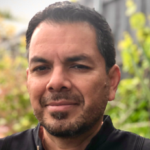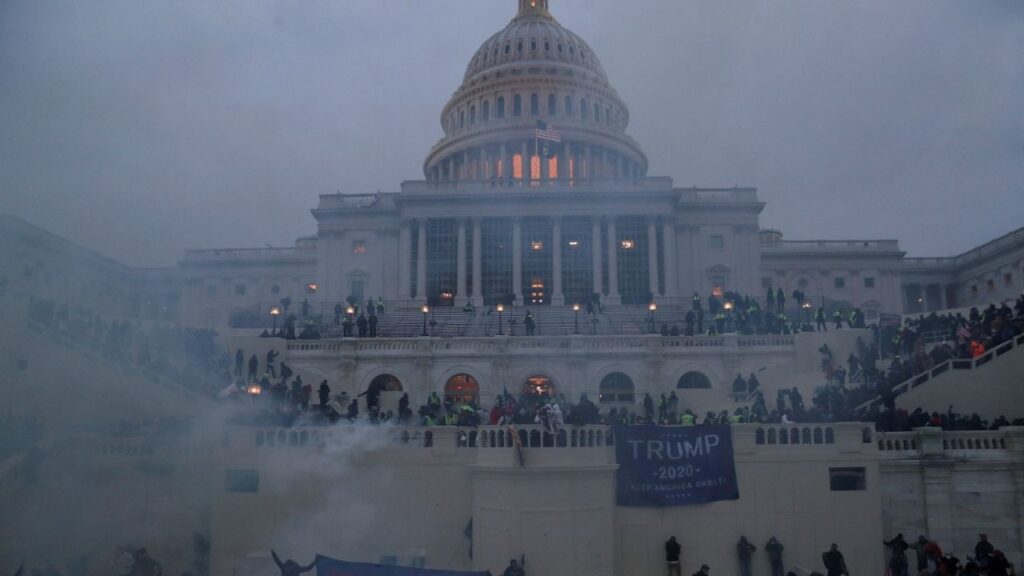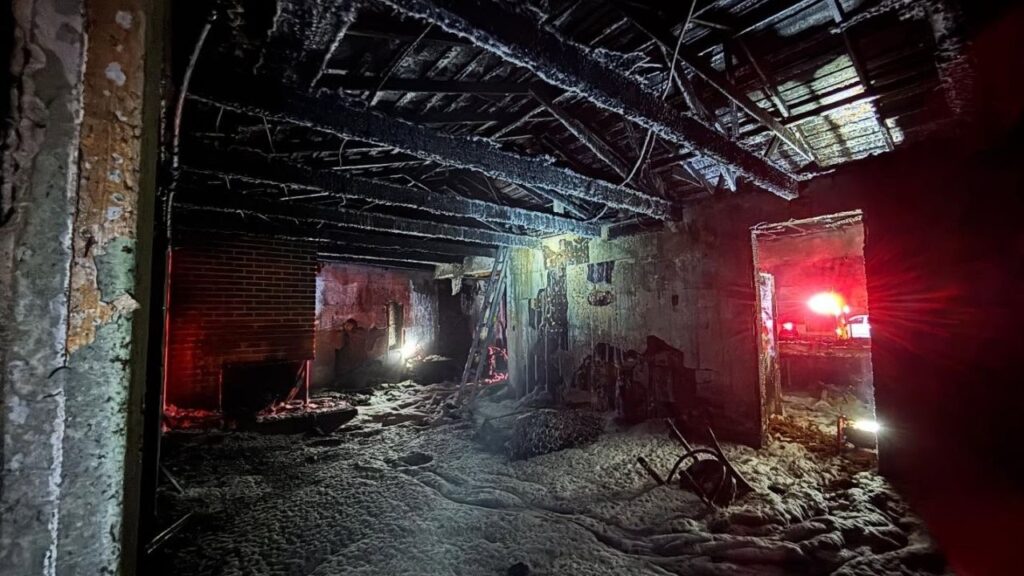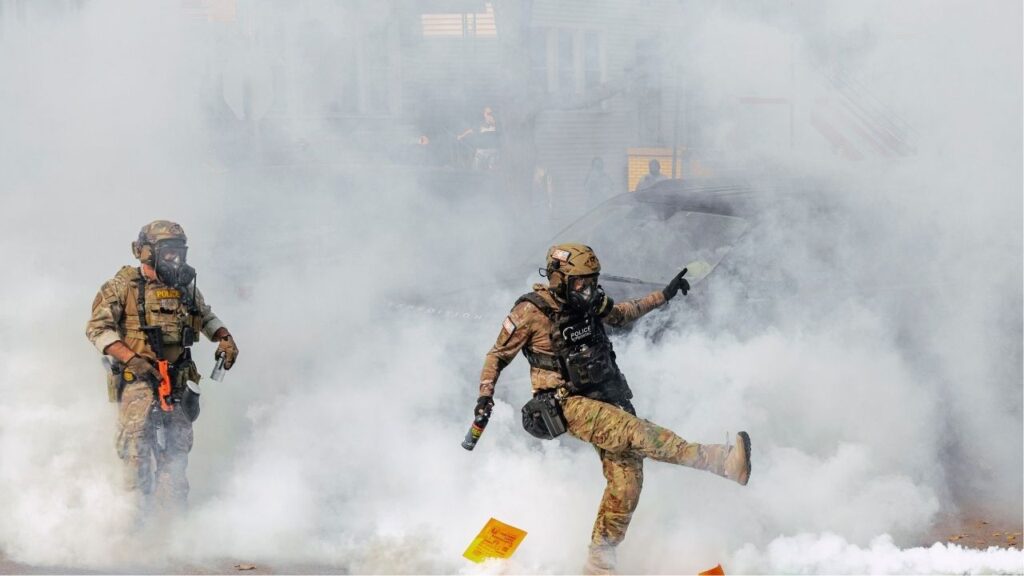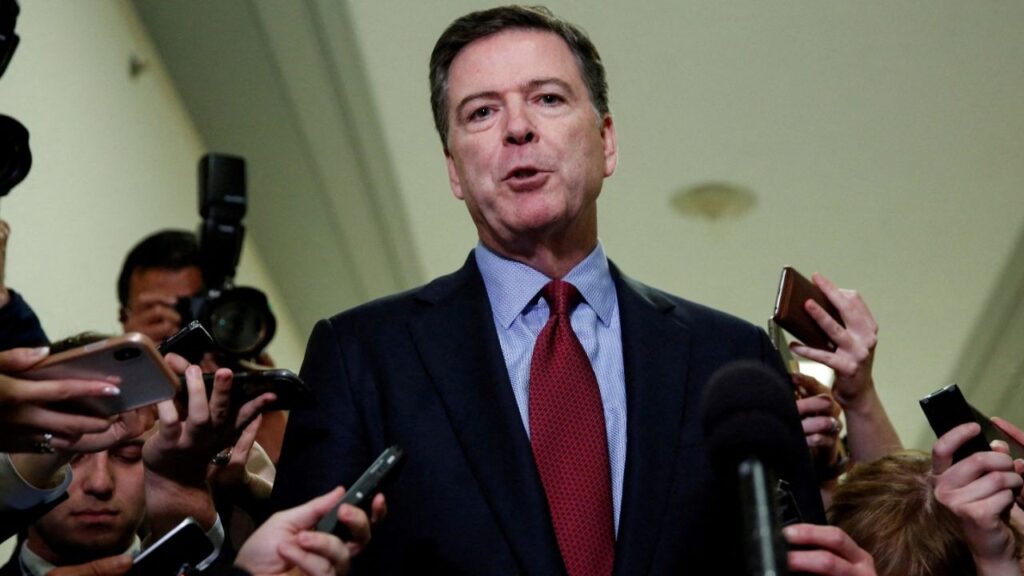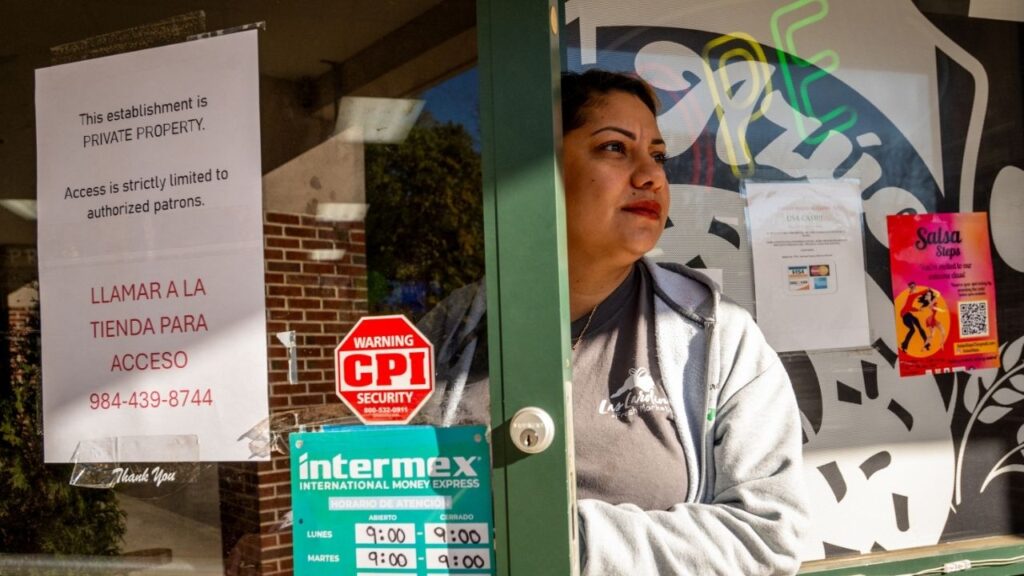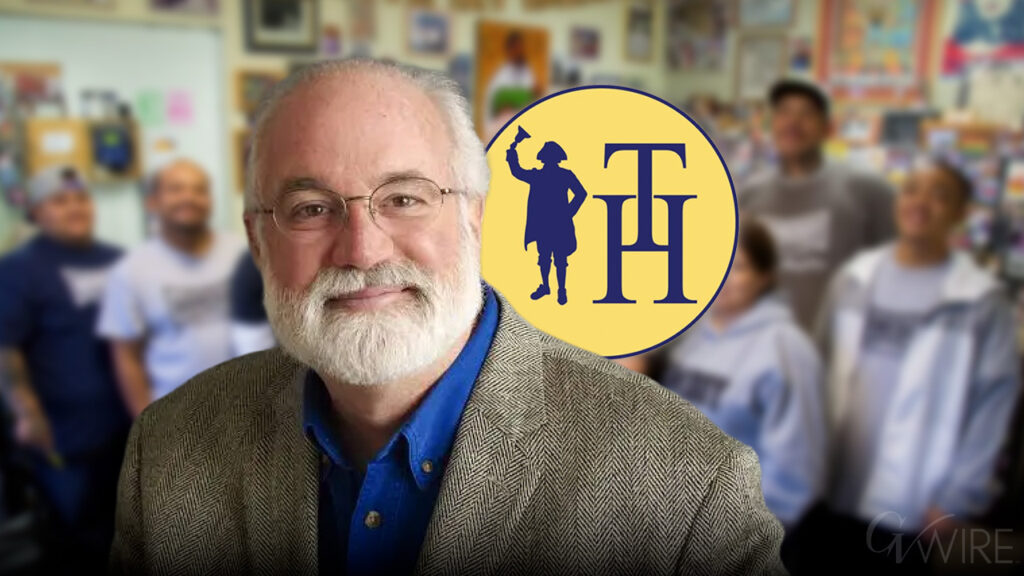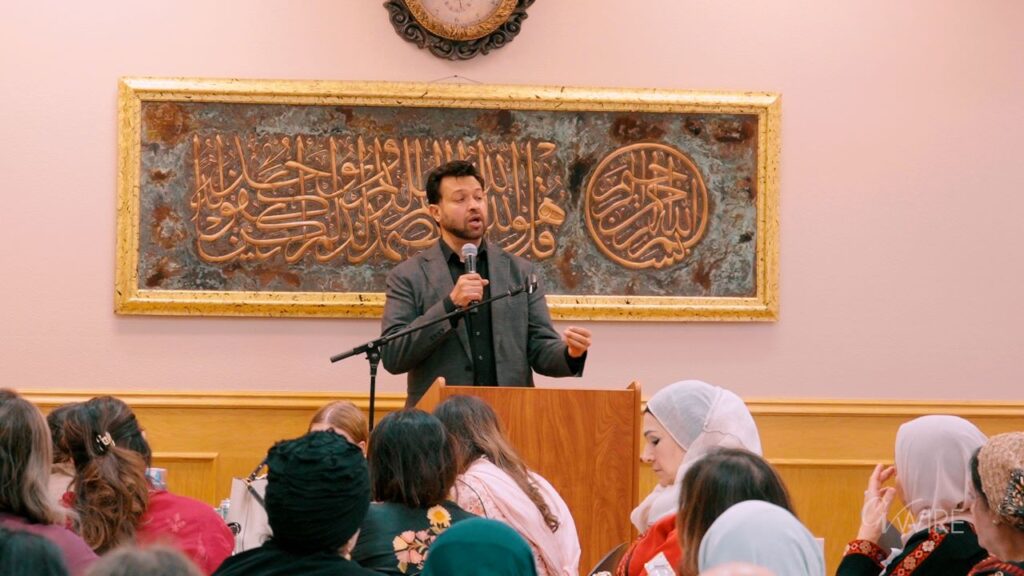A member of the Border Patrol Tactical Unit, BORTAC, kicks a tear gas canister toward a crowd of people during clashes with community members amid immigration raids in the East Side neighborhood of Chicago, Oct. 14, 2025. (Jamie Kelter Davis/The New York Times/File)

- Both ICE and Border Patrol immigration raids have been ruthless under President Trump.
- Don’t expect improvements when Border Patrol completes the power grab of its sister agency.
- Given the unprofessionalism of those in charge, we can expect an expansion of egregious abuses, a lack of accountability, and zero oversight.
Share
|
Getting your Trinity Audio player ready...
|
This commentary was originally published by CalMatters. Sign up for their newsletters.
In late October, rumblings about a major reorganization within the Department of Homeland Security’s immigration enforcement agencies pointed to the U.S. Border Patrol usurping top command posts in the leadership of Immigration and Customs Enforcement.
Anonymous sources told NBC News a “growing frustration with the pace of daily arrests” among President Donald Trump’s top aids has prompted the internal shakeup.
Once complete, Border Patrol’s power grab of its sister agency will likely mark a dramatic shift in how immigration agents conduct enforcement operations. Don’t expect improvements.
People who live in California’s southern borderlands have experienced decades of the Border Patrol’s unaccountable antics. Californians should be concerned that this culture of impunity and wide scale fascination with cruelty will drive a new phase of immigration raids.
Los Angeles and surrounding Southern California counties have endured a relentless onslaught of Border Patrol raids. Agents have indiscriminately targeted working people at car washes, home improvement store parking lots and bus stops, where arrest warrants are not required.
Community members are documenting daily incidents on social media of pervasive violations of the Fourth Amendment, which protects against unreasonable searches and seizures. But Border Patrol agents leading the most egregious enforcement actions often are misidentified as ICE officials.
ICE and Border Patrol, Different Yet Similar
Both ICE and Border Patrol immigration raids have been ruthless. Though not always the case, ICE officials rely on investigations to target people for arrest. They have warrants guiding their operations.
Border Patrol agents, on the other hand, capitalize on dubious interpretations of “articulable facts” to racially profile people, and sometimes this means targeting a lot of people at once.
The Supreme Court now agrees with this misguided logic — so if you fit a racial profile, consider yourself a target.
Andrea Guerrero, executive director of Alliance San Diego, has worked to hold the parent agency of Border Patrol — Customs and Border Protection — accountable. She is concerned about the possible leadership change.
“The gap between what Border Patrol does and what is humane, safe and effective law enforcement is so vast that it is unfathomable that the most abusive, unaccountable agency would be asked to step up and lead another, she said.
Border Patrol’s violence is part of the international record. In a landmark case decided in April, the Inter-American Commission on Human Rights held the United States responsible for the 2010 extrajudicial torture and killing of Anastasio Hernández Rojas, a longtime San Diego resident who emigrated from Mexico.
Hernandez Rojas was a construction worker and father of five who immigration agents were transporting to the border. The commission found that more than a dozen Border Patrol and ICE agents assaulted Hernandez Rojas, tasering him multiple times, punching and kicking him while he was restrained, in view of dozens of border crossers. He arrived at a hospital brain dead.
Later the Border Patrol used a “shadow unit” to alter, conceal and destroy evidence of the encounter.
In June Congress confirmed Rodney Scott as Customs and Border Protection’s newest commissioner. Scott had a senior supervisorial role for the Border Patrol’s San Diego Sector in 2010.
At the confirmation hearing, Scott implicated himself in the attempted cover-up of Hernandez Rojas’ death by admitting he signed an administrative subpoena to acquire Hernandez Rojas’ medical records. It is unlawful to intrude into an active investigation, but Scott said he wanted to gather evidence on Hernandez Rojas and this was “standard procedure.”
Hernandez Rojas had hoped for a better future for his children, said his widow, Maria Puga. She believes that Border Patrol officials commanding ICE agents will lead to more aggressive arrests.
“My family is forever devastated by what they did to Anastasio, and I am worried about our families and our loved ones,” she said. “And just like what happened to my husband, when Border Patrol uses violence, there are never charges against them; there is only impunity.”
Puga is correct in her assessment. Despite hundreds of documented cases of serious abusive practices, not a single Border Patrol agent has been charged for criminal wrongdoing while on duty.
Trump classified Customs and Border Protection as a “security agency” during his first term, allowing Border Patrol agents to enjoy greater protection from public disclosures should they be involved in malfeasance or misconduct.
Hundreds of Deaths, no Prosecutions
A group of nonprofits called the Southern Border Communities Coalition has compiled 351 incidents since 2010 where Border Patrol and other Customs and Border Protection components were involved in fatal, violent encounters, with no accountability.
These include when Border Patrol agents fatally shot a child multiple times in the back —the child was in Mexico— and when an agent fatally shot a U.S. citizen, a mother, in Chula Vista, and when agents intentionally rammed their patrol vessel into a boat, causing a migrant woman to drown off the coast of Encinitas, in San Diego County.
More recently, Border Patrol agents chased 52-year-old Roberto Carlos Montoya Valdés of Guatemala from a Home Depot parking lot in Monrovia on August 14. He was struck by a vehicle and died.
The Border Patrol’s militaristic approach to enforcement has been endemic to border communities. The agents revel in the infrastructure of militarization, from the 30-foot-high border walls to the razor sharp, concertina wire that once was characterized as “a new way of thinking about border security in San Diego.”
Militarizing interior communities — or the “borderfication” of the country, as Guerrero calls it — is what Border Patrol’s El Centro Sector Chief Gregory Bovino has been doing in Los Angeles, Chicago and other cities.
Bovino is the face of Trump’s violent raids, and he’s one of the persons charged with overhauling the ICE district offices, which will include San Diego and Los Angeles. He did not respond to requests for comment about enforcement strategies of Border Patrol agents.
Unprofessional and Undisciplined
A former Customs and Border Protection commissioner was more forthcoming. Gil Kerlikowske, who was the commissioner from 2014 to 2017, expressed misgivings about Border Patrol’s ability to operate in urban settings, especially as more people protest their presence.
He suggested Border Patrol agents under Bovino are undisciplined and unprofessional, and that Bovino encourages excessive force against protesters.
“The Border Patrol agents under his leadership come out in a ragtag ambling fashion,” Kerlikowske told a WBEZ reporter in Chicago, referring to Bovino’s leadership. “The direction to the agents at one point was, ‘Light them up,’ meaning they could strike people with pepper balls. I also saw agents picking people up, body slamming them to the concrete and walking away.”
A new study found Border Patrol’s El Centro Sector under Bovino had a higher ratio of use of force incidents to assaults on agents than any other Border Patrol Sector, from fiscal 2022 to 2025, according to the Project on Government Oversight and American University’s Investigative Reporting Workshop.
With more than $170 billion dollars designated for immigration and border projects in Trump’s Big Beautiful Bill signed in July, including $45 billion for detention and nearly $30 billion to augment ICE activities, we can expect an expansion of egregious abuses — and a lack of accountability, opaqueness, and zero oversight.
About the Author
Pedro Rios is the director of the American Friends Service Committee’s U.S./Mexico Border program and a longtime human rights advocate. His columns have appeared in The San Diego Union-Tribune and Washington Post.
This article was originally published on CalMatters and was republished under the Creative Commons Attribution-NonCommercial-NoDerivatives license.
RELATED TOPICS:
Categories

Kirkland Announces Bid for Costa’s Congressional Seat





